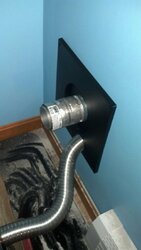So we had a pretty good thread going and it got closed. I was actually looking at adding an OAK to my two stoves. I have done a significant amount of research and this article best describes the flawed logic with OAK's. I will stay with drawing the inside air....
(OLD THREAD: https://www.hearth.com/talk/threads/reasons-for-an-oak.137260/page-3)
Helpful Article: http://www.woodheat.org/the-outdoor-air-myth-exposed.html
(OLD THREAD: https://www.hearth.com/talk/threads/reasons-for-an-oak.137260/page-3)
Helpful Article: http://www.woodheat.org/the-outdoor-air-myth-exposed.html


 It is nonsense why you are against another small hole! The benefits far outweigh the bad...
It is nonsense why you are against another small hole! The benefits far outweigh the bad... 
